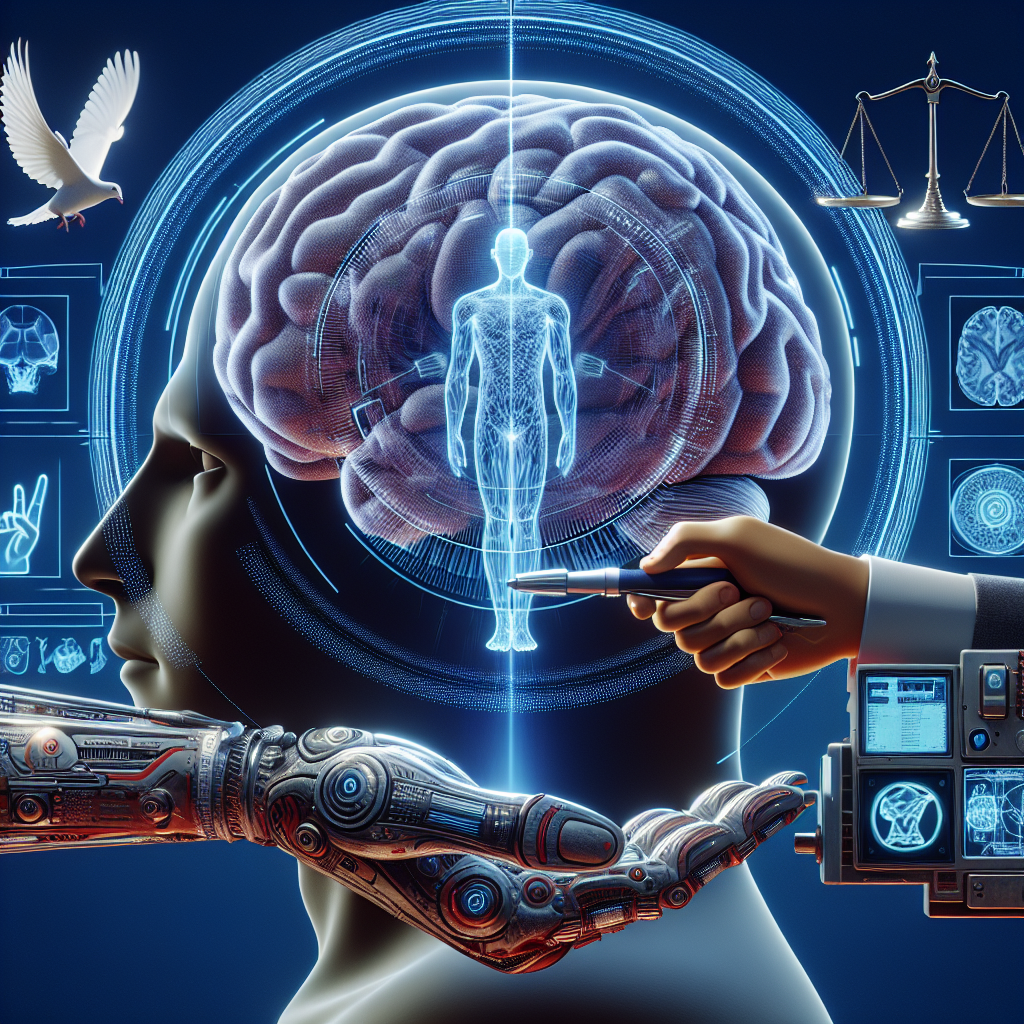
Introduction
Imagine a world where doctors can see what’s happening inside your brain in real-time, potentially detecting mental disorders before symptoms even develop. The future of brain imaging looks promising, with revolutionary technologies on the horizon, from advanced MRI techniques to artificial intelligence algorithms that may change how we understand the human brain. These innovations not only foster incredible possibilities for medical advancements but also bring forth ethical dilemmas that warrant examination. In this article, we will delve deep into The Future of Brain Imaging: Ethical Considerations and Technological Innovations, exploring the implications of these groundbreaking advancements.
The Current Landscape of Brain Imaging Technologies
Before exploring the future, let’s briefly examine where we are today. The most common techniques for brain imaging include:
- MRI (Magnetic Resonance Imaging): High-resolution images of brain structures.
- fMRI (Functional MRI): A technique that measures and maps brain activity by detecting alterations associated with blood flow.
- CT (Computed Tomography) Scans: Useful for detecting abnormalities, especially in emergency medicine.
- PET (Positron Emission Tomography): Provides insights into brain metabolism and function.
Each of these technologies has unique pros and cons, but ongoing innovation is focused on enhancing resolution, speed, and the ability to interpret complex data patterns.
Case Study 1: Advanced fMRI Techniques
Recent developments in fMRI technology enable real-time imaging of brain activity. A 2022 study conducted at Stanford University demonstrated the ability to predict individual thoughts and intentions by analyzing neural patterns. This breakthrough raises questions: How can we safeguard personal thoughts from unauthorized readings?
Ethical Considerations in Brain Imaging
As with many technological advances, we must interrogate the ethical implications of brain imaging advancements. Several key concerns arise related to privacy, consent, and the potential for misuse.
Privacy Issues
With the enhancement of brain imaging technologies, concerns about privacy become paramount. If someone were to gain access to your brain’s image, what could they infer? Personal thoughts, memories, and even emotions could theoretically be interpreted, presenting a profound breach of privacy.
Informed Consent
Another ethical dilemma revolves around informed consent. When individuals participate in brain imaging studies, do they fully understand what they are consenting to? Clear communication about what data will be collected and how it could be used is essential for ethical practices.
Potential for Misuse
The potential misuse of brain imaging technology presents a chilling prospect. For instance, could employers gain access to an employee’s brain scans to make hiring or firing decisions? As algorithms evolve, the clarity and reliability of interpretations may encourage reliance on such data, threatening civil liberties.
Case Study 2: Neuromarketing
A well-documented application of neuroscience is neuromarketing, where companies use brain imaging to gauge consumer reactions to products. For example, a Coca-Cola advertisement looked at emotional responses via fMRI scans. While revealing valuable insights for businesses, this practice stirs concerns about manipulation and consent.
Future Innovations in Brain Imaging
As we contemplate The Future of Brain Imaging: Ethical Considerations and Technological Innovations, we can anticipate numerous advancements fueled by artificial intelligence and machine learning. Here are some of the most exciting prospects:
AI-Driven Analytics
Artificial Intelligence can sift through vast amounts of brain imaging data at incredible speeds, detecting patterns that human analysts may overlook. This could lead to earlier diagnoses of conditions like Alzheimer’s and Parkinson’s.
Chart: Predictive Analytics in Brain Imaging
| Condition | Traditional Detection Age | AI-Enhanced Detection Age |
|---|---|---|
| Alzheimer’s | 75 years | 60 years |
| Parkinson’s | 70 years | 55 years |
| Schizophrenia | 20 years | 15 years |
Neuroprosthetics
Neuroprosthetics aims to restore functionality to the nervous system after injury or disease. Advanced imaging technologies are crucial in mapping brain regions for targeted intervention. Imagine a world where a paralyzed individual uses their thoughts to control prosthetic limbs seamlessly.
Virtual Reality Immersion
Virtual reality (VR) is being used as a complementary tool for brain imaging. By immersing patients in VR environments, researchers can gather data on brain activity while these patients perform tasks, leading to greater understanding of cognitive functions.
The Role of Legislation and Policy
As brain imaging technologies evolve, robust legislation and policy frameworks must be developed. This includes establishing regulations on data storage and use, consent procedures, and guidelines for the ethical application of brain imaging in corporate and medical settings.
Ethical Committees and Oversight
Institutions should establish ethics committees to oversee brain imaging research, ensuring that ethical standards are upheld. These bodies will play a crucial role in navigating moral challenges while fostering innovation.
Conclusion
The evolution of brain imaging is a frontier filled with possibilities, shaping the future of medicine, psychology, and even consumer behavior. However, with every great advancement comes significant ethical considerations. Ensuring that privacy is respected, informed consent is obtained, and that the technology is not misused is critical to ensuring a beneficial future for everyone.
As we ponder the trajectory of The Future of Brain Imaging: Ethical Considerations and Technological Innovations, it’s crucial to strike a balance between innovation and integrity. By promoting ethical practices, we can harness the transformative power of brain imaging to benefit society while guarding against its potential pitfalls.
FAQs
1. What are the main technologies used in brain imaging?
The primary technologies include MRI, fMRI, CT scans, and PET scans, each with unique applications and strengths.
2. How does AI improve brain imaging?
AI enhances brain imaging by rapidly analyzing large datasets, allowing for early detection of conditions and identifying patterns that might go unnoticed by human analysts.
3. What ethical concerns exist regarding brain imaging?
Key concerns include privacy, informed consent, and the potential for misuse in contexts like employment or marketing.
4. How can legislation help in the context of brain imaging?
Legislation can create frameworks to protect individual privacy, ensure informed consent, and set standards for ethical research practices.
5. What is neuromarketing and why is it controversial?
Neuromarketing uses brain imaging to analyze consumer behavior. It raises ethical questions about manipulation and the extent to which companies can interpret and exploit emotional responses for profit.
In the expansive landscape of mind science, The Future of Brain Imaging: Ethical Considerations and Technological Innovations not only defines a path for groundbreaking medical advancements but also serves as a call to action for a responsible approach. Embracing these innovations with a commitment to ethical principles may lead to a future where brain imaging maximally benefits society as a whole.














